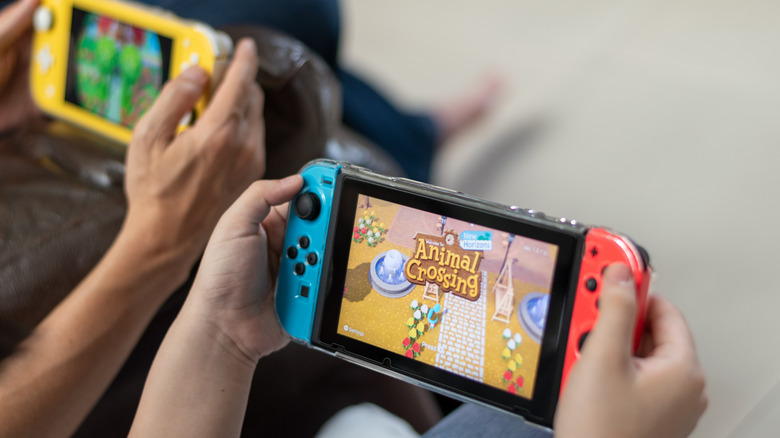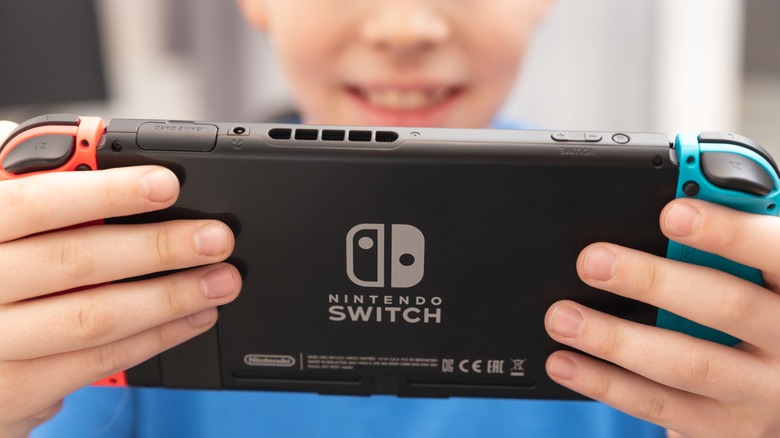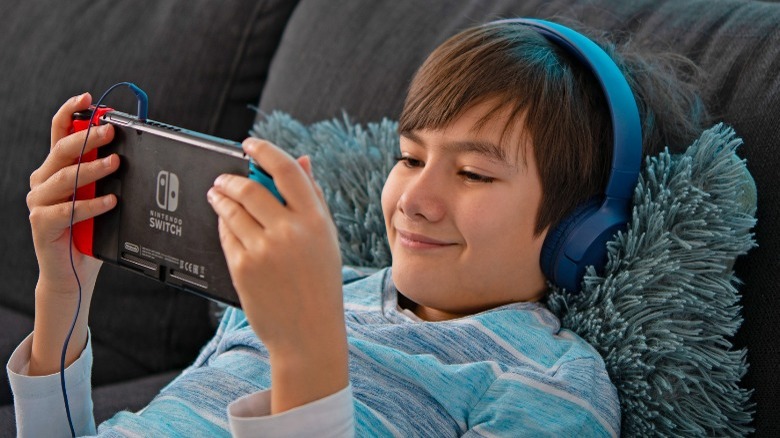How To Stop Your Nintendo Switch From Overheating
We may receive a commission on purchases made from links.
Have you been having some problems with your Nintendo Switch? Not all of them stem from overheating, but many of them do. If your console is randomly going into sleep mode, freezes, or struggles to handle games it would previously breeze through, you might be having an issue tied to overheating. Not all issues on your Nintendo Switch are related to overheating, and not all heat generated by your Switch means you have an issue.
Nintendo itself is aware of the fact that the console can run hot sometimes. During charging and gameplay, the device might feel warm or even hot to the touch, and that's not necessarily abnormal. However, when this starts affecting your regular usage of the console, the problem becomes serious.
There could be plenty of reasons why your Switch might be overheating, but the fixes for this annoyance are all simple to perform. You will likely have to repeat them in the future, because regular maintenance prevents future overheating, too.
One of the most common reasons for overheating is dust buildup. The more dust there is, the higher the chance that it will begin to struggle with maintaining the right temperatures. In order to fix this, you're going to have to clean it thoroughly, and then make sure to repeat the process once every 3 to 6 months. It's very similar to cleaning a desktop PC.
How to clean the dust from your Nintendo Switch
Before we begin, make sure to grab a can of compressed air (sometimes also referred to as compressed gas, pressurized air, or gas duster), a clean microfiber cloth, and a cotton swab or a clean toothbrush. Once you're all set, follow the steps below to clear out the dust.
- Turn off your Nintendo Switch entirely, remove it from its docking station, and unplug the dock completely. Remove the Joy-Cons.
- Using the cloth, carefully wipe the surface of the console. Avoid pushing dust into the vents.
- Shake the can of compressed air and insert the straw into it.
- Use compressed air to blow through the air intake vents at the bottom of the back side of your device.* Do not tilt the can downward — move your console instead.
- Make sure to clean the Joy-Con rails and every other part of the console. Use a cotton swab or a toothbrush if you find some unreachable places that need to be cleaned.
- Perform the same kind of maintenance on the docking station, leaving it spotless.
- Once you're all done, leave everything unplugged for 10-20 minutes to be safe, then plug it back in.
*Whatever you do, do not blow air into the top vent (five little holes) of your console. This is where the air is supposed to exit the Switch. If you blow air into this area, you'll only really be blowing dust deeper, making the whole process a loss.
Prevention before heat
Cleaning the dust is an important step that needs to be repeated often, but there are some other things you can do to make sure your Nintendo Switch runs well. Prevention is a better choice than trying to fix the problem once it has already occurred. Letting your Switch overheat for extended periods of time will damage its internal components, so to avoid wear and tear, make sure you follow our tips listed below.
Nintendo advises that you do not use the console during heat waves. The recommended temperature range in which you can use the console safely is 5 to 35 degrees Celsius, meaning 41 to 95 degrees Fahrenheit. That's not all, though — make sure you also do not keep the console in a poorly ventilated area. It needs to be in an area with plenty of room for airflow, especially if you're putting it through an intense gaming session. When it's warm, try to avoid prolonged sessions. Play for an hour, then let your console cool down a bit. This is even more important if you play resource-heavy games.
If you've followed all of these steps and still find that your console is overheating, the problem might lie with the console itself and not with how you use and maintain it. Its fans could be damaged — if you dropped it recently, that's probably the cause. Your best bet would be to contact Nintendo directly and look into authorized repair services in your area.


